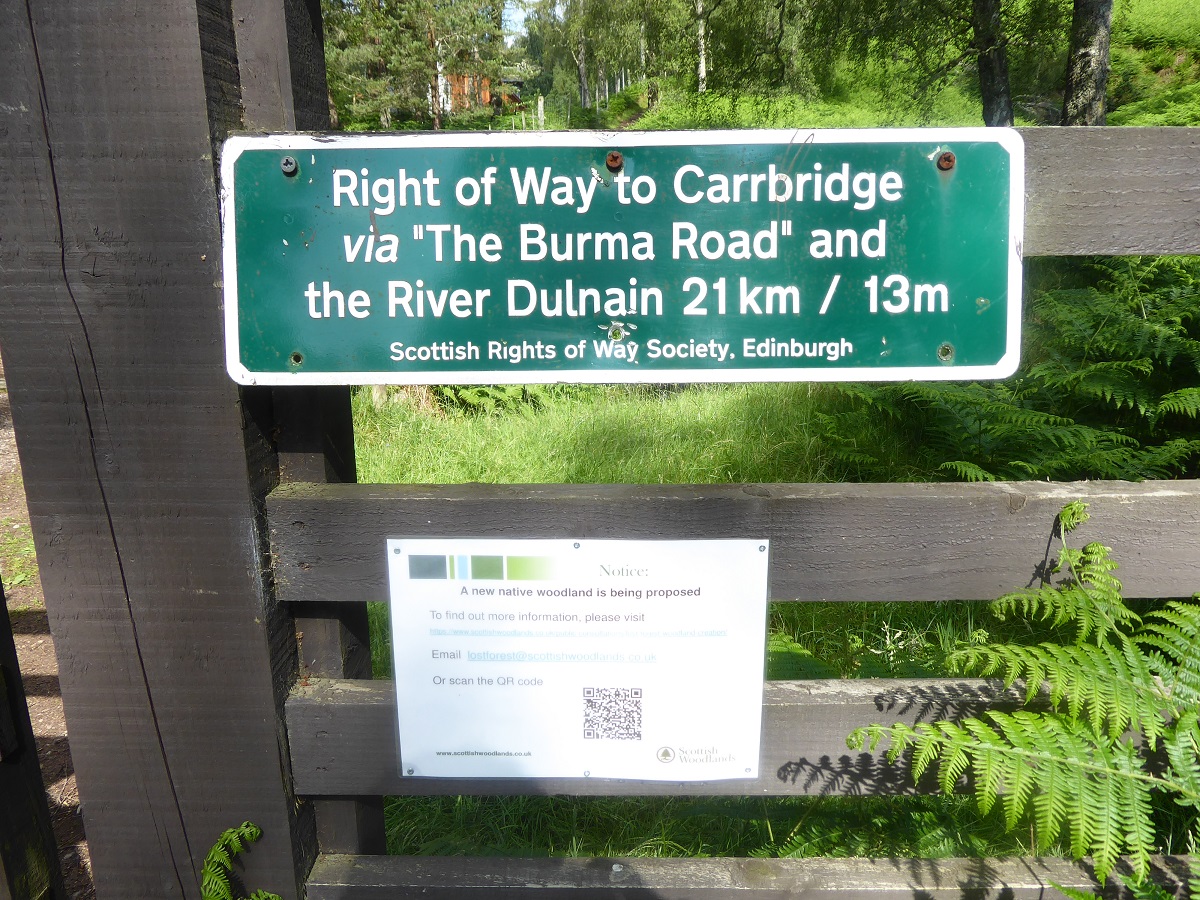
I have stretched the meaning of the “Cairngorms” in this series of posts, half of which have featured land west of the A9, and I am going to stretch it even further in two posts which take a look at Brewdog’s proposals to create a “Lost Forest” on the Kinrara estate which they bought earlier this year. Two weeks ago I cycled with Dave Morris, a map of the forest proposals in hand, up the Burma Rd to the watershed where we crossed over the Cairngorms National Park boundary and descended to the Dulnain. This first post will consider the part of Kinrara that lies within the National Park. The second will consider the larger part of the estate that lies within the catchment of the River Dulnain.
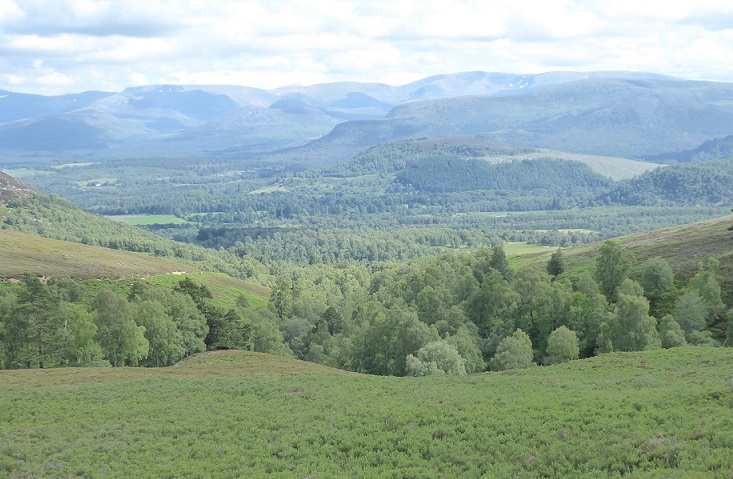
BrewDog are a very dynamic company, which is how they have done so well in the cut-throat world of capitalist competition. That is not without its costs (see here) and (here) but, in that, BrewDog is little different to other companies, including Asos, the clothing company which has made Anders Povslen a billionaire and enabled him to bankroll Wildland Ltd and the pioneering conservation work around Glen Feshie. While how Anders Povslen and BrewDog makes their money is not unimportant, this post will focus on what BrewDog are currently proposing to do at Kinrara and the rationale for this.
BrewDog’s dynamism and management style, however, is I believe relevant to understanding the initial proposals which have been developed by Scottish Woodlands and which are out for consultation until tomorrow (see here). BrewDog appears to take decisions very quickly. Having decided to go carbon neutral and that planting trees offered an important way to mitigate climate change and offset their carbon emissions, they quickly decided to set an example of what companies could do by starting to buy land to offset carbon (see here). An admirable intention, even if there is not enough land left in the world to offset more than a small proportion of business carbon emissions, and potentially revolutionary in Scotland where sporting estates have for years stood in the way of conservation. Rumour has it that BrewDog’s initial interest in Kinrara was sparked by the distillery, declared maker of the best contemporary Scottish Gin in March (see here) but when they saw the large areas of apparently treeless ground over the Dulnain watershed they quickly saw the opportunity to put theirs words into action and undertake a massive ecological restoration project. This they quickly claimed as “the single biggest native woodland establishment and peatland restoration project ever in the UK” and, in inimitable marketing style, “as bigger than 18 actual countries” (see here). Apparently they were unaware of what Wildland Ltd has been doing on the other side of the Spey and Anders Povlsen had to politely point this out to them (see here).
Rumour has it that BrewDog’s initial interest in Kinrara was sparked by the distillery, declared maker of the best contemporary Scottish Gin in March (see here) but when they saw the large areas of apparently treeless ground over the Dulnain watershed they quickly saw the opportunity to put theirs words into action and undertake a massive ecological restoration project. This they quickly claimed as “the single biggest native woodland establishment and peatland restoration project ever in the UK” and, in inimitable marketing style, “as bigger than 18 actual countries” (see here). Apparently they were unaware of what Wildland Ltd has been doing on the other side of the Spey and Anders Povlsen had to politely point this out to them (see here).
Had BrewDog, before they purchased the estate, been forced to talk and agree their plans with the Cairngorms National Park Authority – as parkswatch has advocated for all major land purchases in our National Parks – or been to visit Anders Povslen who, in 2018, had purchased Kinrara House (see here), it is possible they might have realised they needed to think through how to implement their ideas more carefully. Instead, despite their acknowledgement of the importance of peat bogs and the potential for peat bog restoration on the estate, they commissioned a company called Scottish Woodlands to produce a woodland creation plan. What was – and still is needed – is a landscape-scale conservation plan which looks at the estate as a whole within the context of the land round about.
Scottish Woodlands proposals
Scottish Woodlands have produced what one would expect from where their expertise lies, a tree planting plan, almost certainly designed to take full advantage of the current forestry subsidy system. Three concept maps and an accompanying letter explain their proposal :

 The penultimate proposal about access, along with the caption about the Burma Rd, is not a proposal at all and is legally wrong. The public in Scotland have a right of access whatever Scottish Woodlands thinks.
The penultimate proposal about access, along with the caption about the Burma Rd, is not a proposal at all and is legally wrong. The public in Scotland have a right of access whatever Scottish Woodlands thinks.
Set that aside, along with the other statements whose meaning is hard to fathom, and the proposal From Scottish Woodlands comes down to planting two large areas on either side of the watershed between the Spey and Dulnain, both of which are to be surrounded with deer fencing.
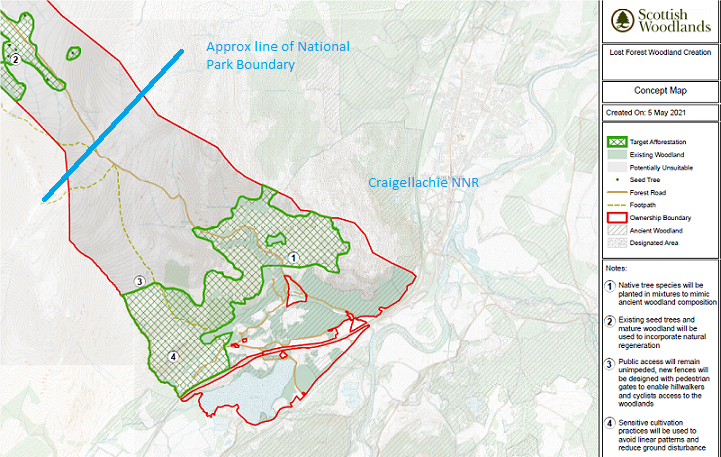
In essence the proposal on the Strath Spey part of the estate is to extend the existing block of woodland up the hill by planting a swathe of native trees above and to incorporate within this the finger of native woodland which currently extends up the Allt Dubh.
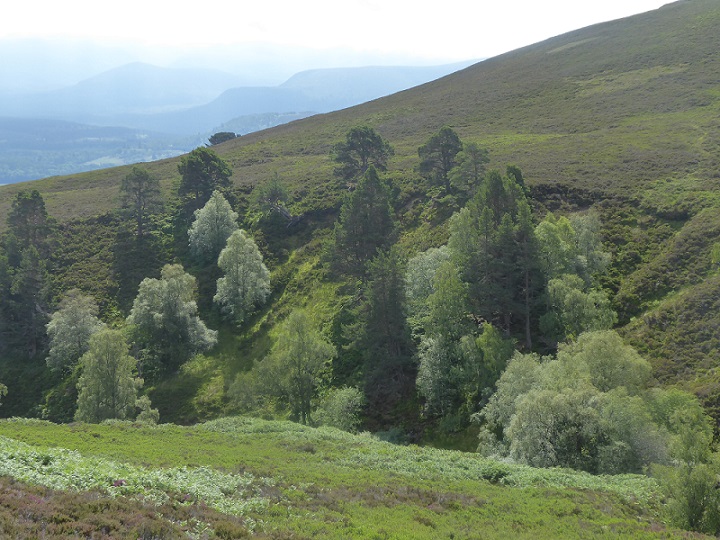
Our ride up the Burma Rd showed there is absolutely no need for this planting..
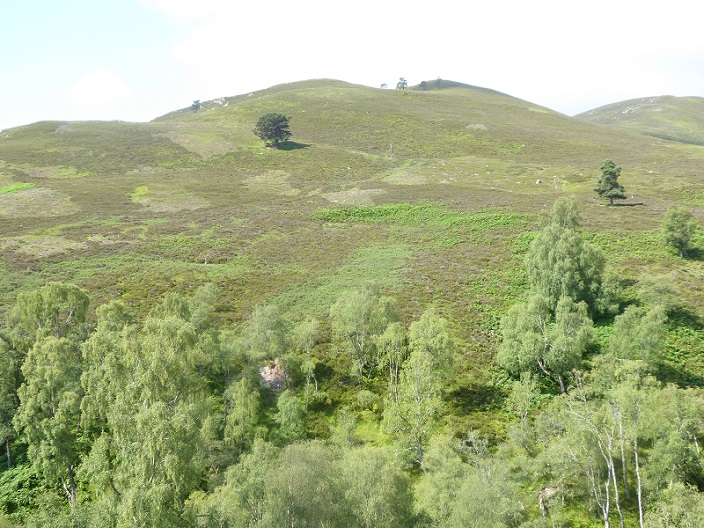
Scottish Woodlands make not a single reference to muirburn in their consultation documents. That is despite the extensive muirburn which the previous owners of the estate carried out in the areas which Scottish Woodlands are now proposing should be planted. With all the obvious seed sources nearby, both the established woodland and the isolated pines on the hillside, it should be equally obvious that natural regeneration could take off very quickly now the muirburn has stopped.
Indeed, the dozens of burnt patches should make it easier and quicker for new seeds to become established. Those bare areas, ripe for colonisation, are supplemented by the extensive areas of bare mineral soils that have been created along the Burma Rd by “improvement works”.

While elsewhere landowners have scarified ground to try and speed up rates of natural regeneration, Scottish Woodlands makes no mention of how past destructive land-management practices might impact on the potential speed of natural regeneration here.
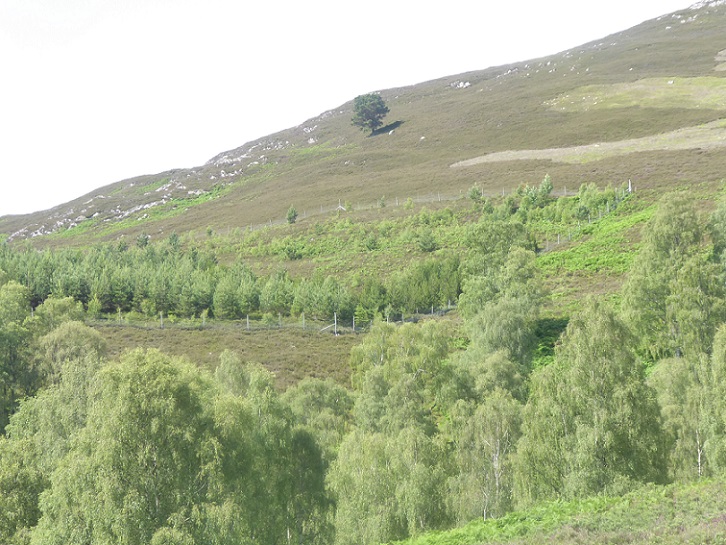
There is obvious evidence of the potential for natural regeneration within the proposed planting area visible on the hillside. The fencing, however, points to the second major issue that BrewDog needs to tackle and which is also not mentioned once by Scottish Woodlands, the impact of overgrazing by deer.
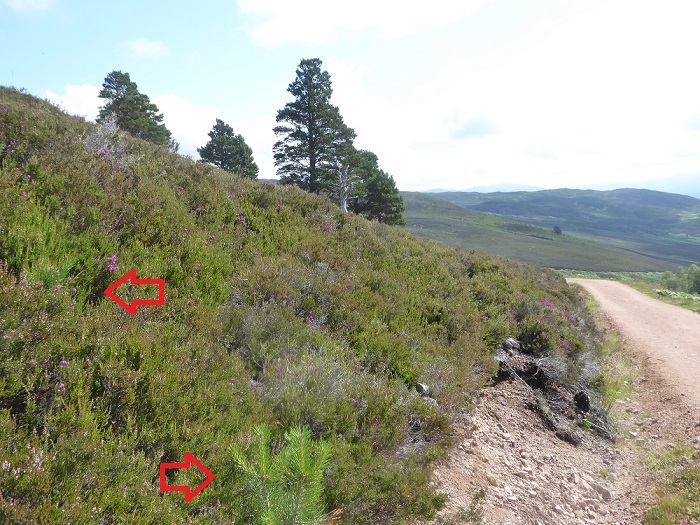
While easily missed by the casual observer, if you take a moment to stop and look, there are already plenty of trees all the way up the section of the Burma Rd that Scottish Woodlands is proposing to plant. The issue is that most are below the heather and get browsed off the moment their heads emerge, if not sooner.

Scottish Woodlands’ woodland consultation ducks the deer issue. It says nothing about the numbers of deer on Kinrara, how these fluctuate over the course of the year or their impacts. Instead, they propose to build fences around the “new” woodland area to keep the deer out. All that will do is displace the deer and the problems they cause elsewhere while creating unnatural areas of evenly aged native trees.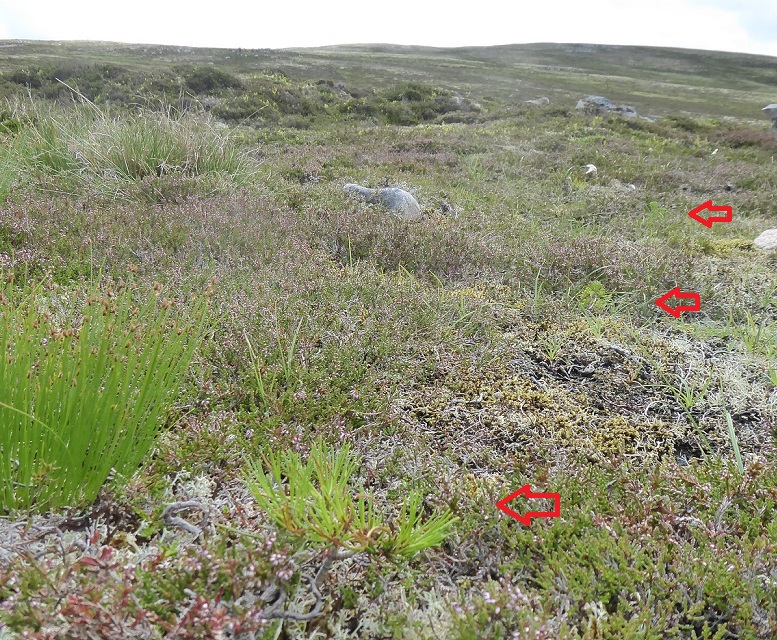
Pine seedlings by the Burma Rd as it crosses the watershed at c670m and the path up to the Corbett, Geal Charn Mor. We found seven in an area less then 10m².As in most of the Cairngorms, there are actually tree seeds everywhere, including places far from any obvious seed source (seeds can be blown miles over the snow, get carried by birds etc). But the majority never develop into anything visible because of grazing. The seedlings at the top of the Burma Rd, featured in the photo above, have almost certainly only grown this big because high levels of recreational use by mountain bikers and walkers in the area help keep the deer away.
This points to another failing in Scottish Woodlands proposals. They say nothing about the potential for montane scrub development on the higher ground. A lost opportunity.
What needs to happen
Set aside the hype, BrewDog have got the most important thing right at Kinrara, there is a Lost Forest. The problem is that instead of engaging ecologists who could have advised them on how to let this forest emerge naturally – the basic answer is simple, stop muirburn and reduce deer numbers as they have done in Glen Feshie – they have asked traditional foresters to come up with a plan and they have come up with a proposal that involves planting all over the Lost Forest.
While Scottish Woodlands make some references to “natural regeneration” – see two in key to map above – it appears to play a secondary and rather vague role in their plans. This needs to be turned on its head so that natural regeneration is put first. There could still be some potential for planting on on the Strath Spey part of the estate. For example, shortly after the start of the Burma Road there is a grassy area off to the right, that appears to have been used for sheep grazing, where planting might be justified:
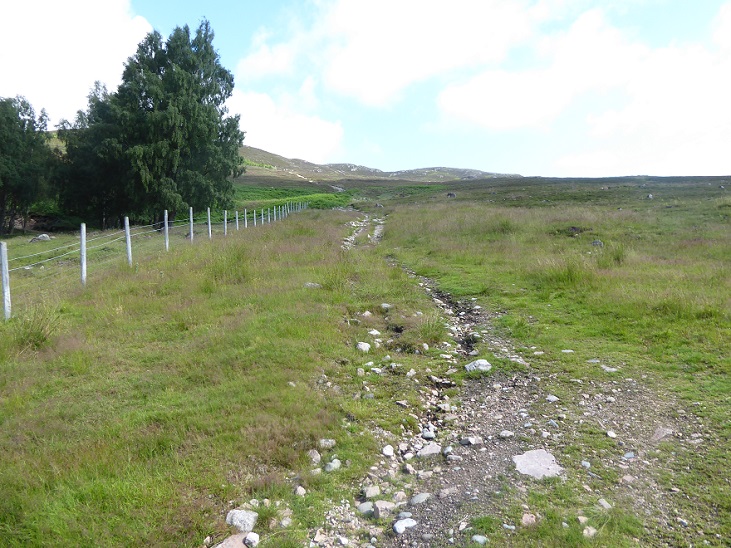
There also might be an argument for planting some areas of montane willow higher up along water courses or the disturbed edges of the Burma Rd if detailed ecological surveys show these species are now absent from the area.
Apart from that, however, BrewDog’s main focus should be on bringing deer numbers down. BrewDog want to be seen to act fast and they have the ideal opportunity to do that with respect to overgrazing by deer. The stag stalking season started on 1st July. One wonders how many stags they have shot to date?
And if BrewDog feel constrained by the current stalking seasons, they could always call on the Scottish Government to implement the recommendations of the Deer Working Group to abolish the closed season for stag shooting before the 20th October, when the current stag stalking season ends. That would be just in time for the COP26 conference. If BrewDog could persuade the Scottish Government to do that, they would enable the main constraint on natural regeneration in Scotland to be removed. That would then result in far more trees than BrewDog could ever plant at Kinrara.
It would also enable BrewDog to retain/re-employ some or all of the gamekeepers that have been threatened with redundancy (see here) -assuming they would be prepared to accept a new role.
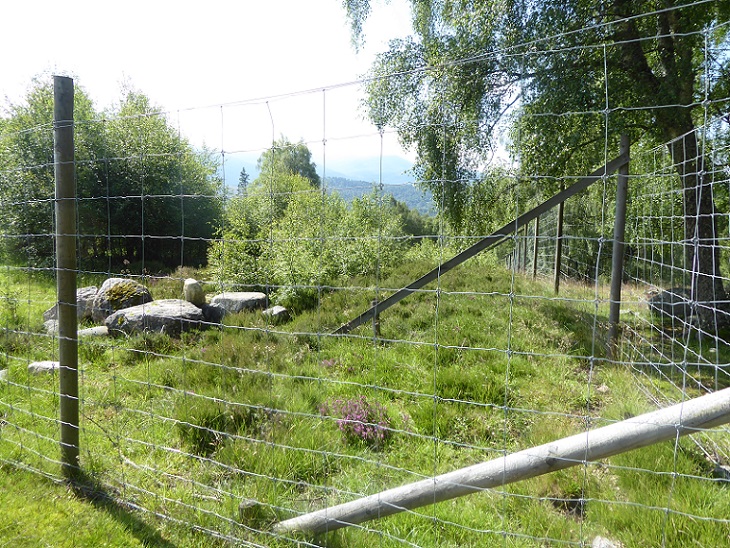
Then, as deer number reduce, BrewDog could remove all the existing deer fences from the estate allowing the woodland to develop far more naturally and facilitating unimpeded access across the land.
There is a massive opportunity for BrewDog at Kinrara but a traditional tree planting plan, as proposed by Scottish Woodlands, will not deliver that. BrewDog should ask Scottish Woodlands to go back to the drawing board. The case for doing that is even greater over the watershed in the Dulnain which I will consider in my next post.
Scottish Woodland were also employed by Wildland Ltd to mound and plant the land to the west of Glenfeshie on what was originally Killihuntly Farm and Lynaberack Estate in Glen Tromie. The main difference compared with the Kinrara proposal being that no fencing was used.
Yes, there is a great opportunity for the BrewDog owners to start an excellent regeneration project on the Kinrara Estate. The problem is, as you say Nick, the owners are “very dynamic” to the point (my words) of being impulsive. That might be appropriate in the market in which they operate, but it is certainly not appropriate to make impulsive decisions on the future of the Kinrara Estate, which I suspect is a challenge they have little or no experience. This is a time to observe and learn from those more experienced – e.g. Anders Povlsen.
I speculate – would BrewDog get the carbon credits they clearly are chasing if they relied mainly on encouraging regeneration of woodland – which from your observations, Nick, the estate is ripe for as long as grazing pressures are significantly reduced?
I have been sceptical about BrewDog’s motives for a few years now ever since I read an article on BrewDog vehemently complaining about Aberdeenshire Council preventing them from developing a new Beer Hotel. The real story was they were trying to rip off the taxpayer by buying an area of land owned by Aberdeenshire Council at farmland land prices….as long as Aberdeenshire Council granted them planning permission for a Beer Hotel. Aberdeenshire Council quite rightly pointed out that the land price with planning permission would be at retail land prices – at least 10 times the farmland price.
I understand that Nts at Mar Lodge are one of the few places that have got a Woodland Grant for the regeneration of Scots Pine on the evidence of effective control of browsing. Regeneration is preferable to planting and should be more actively promoted by Nature Scot. Dear fencing is both undesirable but unsustainable, it has a short life relative to the life cycle of a native wood. Effective deer control works very well.